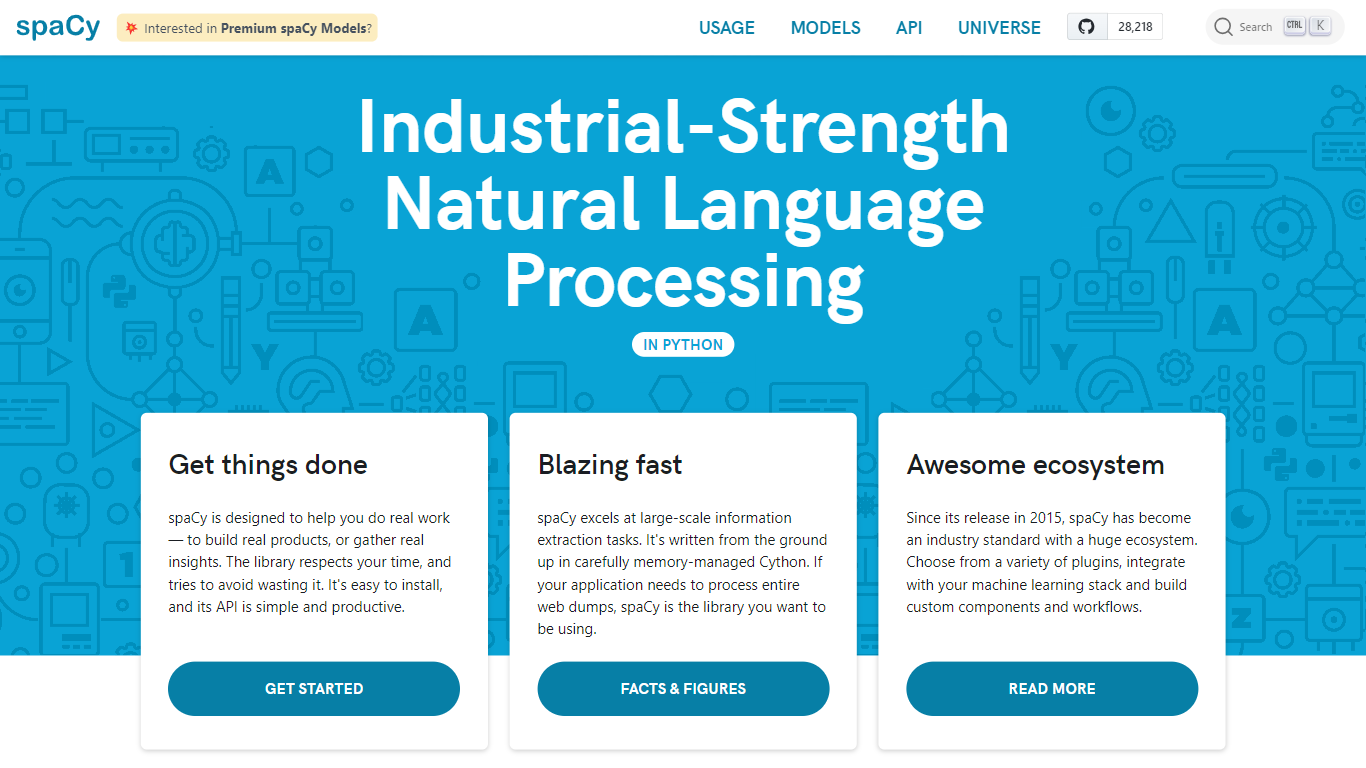spaCy vs GPT-4
In the clash of spaCy vs GPT-4, which AI Large Language Model (LLM) tool emerges victorious? We assess reviews, pricing, alternatives, features, upvotes, and more.
When we put spaCy and GPT-4 head to head, which one emerges as the victor?
Let's take a closer look at spaCy and GPT-4, both of which are AI-driven large language model (llm) tools, and see what sets them apart. With more upvotes, GPT-4 is the preferred choice. GPT-4 has garnered 9 upvotes, and spaCy has garnered 6 upvotes.
Not your cup of tea? Upvote your preferred tool and stir things up!
spaCy

What is spaCy?
Discover the power of spaCy, an open-source library built for Natural Language Processing (NLP) in Python. As an industrial-strength tool, it is efficient for real-world tasks and product development, streamlining tasks like Named Entity Recognition (NER), Part-of-Speech (POS) tagging, dependency parsing, and more. It was meticulously designed for speed and memory management, utilizing Cython for optimized performance. SpaCy supports a vast array of languages and integrates seamlessly with various machine-learning frameworks.
The ecosystem is extensive, with plugins, custom models, and an established community. With its rigorous evaluation for accuracy, spaCy is a robust solution for NLP tasks, making it an industry standard since 2015. Whether you're processing large datasets or seeking integrated Large Language Model (LLM) capabilities, spaCy offers a production-ready system that respects users' time without compromising on sophistication or capabilities.
GPT-4

What is GPT-4?
GPT-4 is the latest milestone in OpenAI’s effort in scaling up deep learning.
GPT-4 is a large multimodal model (accepting image and text inputs, emitting text outputs) that, while less capable than humans in many real-world scenarios, exhibits human-level performance on various professional and academic benchmarks. For example, it passes a simulated bar exam with a score around the top 10% of test takers; in contrast, GPT-3.5’s score was around the bottom 10%. We’ve spent 6 months iteratively aligning GPT-4 using lessons from our adversarial testing program as well as ChatGPT, resulting in our best-ever results (though far from perfect) on factuality, steerability, and refusing to go outside of guardrails.
GPT-4 is more creative and collaborative than ever before. It can generate, edit, and iterate with users on creative and technical writing tasks, such as composing songs, writing screenplays, or learning a user’s writing style.
spaCy Upvotes
GPT-4 Upvotes
spaCy Top Features
Performance: Optimized for high-speed performance with memory-managed Cython.
Multilingual Support: Capable of handling over 75 languages and featuring 84 trained pipelines for 25 languages.
Advanced Components: Includes NER, POS tagging, dependency parsing, and more.
Customization and Integration: Supports custom models in frameworks like PyTorch and TensorFlow, complete with visualizers for syntax and NER.
State-of-the-Art Accuracy: Incorporates transformer models and benchmarks confirming leading accuracy scores.
GPT-4 Top Features
No top features listedspaCy Category
- Large Language Model (LLM)
GPT-4 Category
- Large Language Model (LLM)
spaCy Pricing Type
- Freemium
GPT-4 Pricing Type
- Freemium
